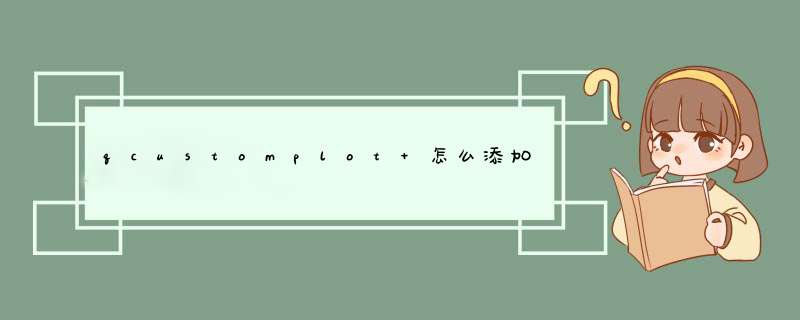
2、关键函数与设置属性的介绍
//设置显示的大小和位置
ui->PressDraw->setGeometry(QRect(30,30,650,350))
//设置需要显示的坐标轴,
ui->PressDraw->xAxis2->setVisible(true)
ui->PressDraw->xAxis2->setTickLabels(true)
ui->PressDraw->xAxis->setVisible(false)
ui->PressDraw->xAxis->setTickLabels(false)
//添加箭头
ui->PressDraw->xAxis2->setUpperEnding(QCPLineEnding::esSpikeArrow)
ui->PressDraw->yAxis->setUpperEnding(QCPLineEnding::esSpikeArrow)
//纵坐标反转找了好久才知道这个函数
ui->PressDraw->yAxis->setRangeReversed(true)
[cpp] view plain copy
//设置坐标轴单位名称
ui->PressDraw->xAxis2->setLabel(codec->toUnicode("压力(MPa)"))
//右上标签显示
ui->PressDraw->legend->setVisible(true)
ui->PressDraw->legend->setFont(QFont("Helvetica",9))
ui->PressDraw->legend->setBrush(QBrush(QColor(255,255,255,210)))//210透明度
ui->PressDraw->legend->setSelectableParts(QCPLegend::spItems)
ui->PressDraw->axisRect()->insetLayout()->setInsetAlignment(0, Qt::AlignTop|Qt::AlignRight)//标签位置
//移动和放缩
ui->PressDraw->setInteractions(QCP::iRangeDrag | QCP::iRangeZoom | QCP::iSelectPlottables)
//向绘图区域QCustomPlot添加一条曲线
ui->PressDraw->addGraph(ui->PressDraw->yAxis,ui->PressDraw->xAxis)
ui->PressDraw->graph(i)->setData(y,x)//绘图的数据
ui->PressDraw->graph(i)->setName(codec->toUnicode("曲线%1").arg(i))
ui->PressDraw->graph(i)->setScatterStyle(m_StyleChoice.at(i))//点样式
ui->PressDraw->graph(i)->setPen(m_PenChoice.at(i))//画笔
ui->PressDraw->graph(i)->rescaleAxes()//重绘
3、很多标签是有槽函数的,可根据需要进行编写。比如可以通过点击“深度”,实现单位换算。以及右上标签"曲线0",实现需要的功能,我这里是点击实现数据的更改和查看。这里列出一些槽函数作参考。
//双击修改坐标轴标签设置单位
connect(ui->PressDraw, SIGNAL(axisDoubleClick(QCPAxis*,QCPAxis::SelectablePart,QMouseEvent*)),
this, SLOT(axisLabelDoubleClick_Press(QCPAxis*,QCPAxis::SelectablePart)))
-----------------------------------------------------------------------------------------
//点击曲线显示曲线参数信息
connect(ui->PressDraw, SIGNAL(plottableClick(QCPAbstractPlottable*,QMouseEvent*)),
this, SLOT(LineDoubleClick_Press(QCPAbstractPlottable*)))
-----------------------------------------------------------------------------------------
//右键保存图像(很重要,根据设置将图像保存为自己需要的图片格式)
ui->PressDraw->setContextMenuPolicy(Qt::CustomContextMenu)
connect(ui->PressDraw, SIGNAL(customContextMenuRequested(QPoint)), this, SLOT(PresscontextMenuRequest(QPoint)))
//槽函数代码
void simulationPT::PresscontextMenuRequest(QPoint pos)
{
QTextCodec *codec = QTextCodec::codecForName("GB18030")
QMenu *menu = new QMenu(this)
menu->setAttribute(Qt::WA_DeleteOnClose)
if (ui->PressDraw->legend->selectTest(pos, false) <0){
menu->addAction( codec->toUnicode("保存图片"), this, SLOT(PressSaveGraph()))
}
menu->popup(ui->PressDraw->mapToGlobal(pos))
}
-----------------------------------------------------------------------------------------
//点击右上标签编辑数据
connect(ui->PressDraw, SIGNAL(legendDoubleClick(QCPLegend*,QCPAbstractLegendItem*,QMouseEvent*)), this,
SLOT(legendDoubleClick_Press(QCPLegend*,QCPAbstractLegendItem*)))
1. 确认服务器的网卡有支持设置静态IP和动态IP,如果需要使用静态IP:首先要修改服务器的网络配置,可以使用命令或者图形界面的方式。
使用命令:
(1)配置IP地址:
#ifconfig eth0 192.168.1.1
(2)配置子网掩码:
#ifconfig eth0 netmask 255.255.255.0
(3)配置网关:
#route add default gw 192.168.1.1
图形界面:
(1)运行图形环境,找到网络连接图标;
(2)右键点击网络连接图标,选择“属性”;
(3)在d出的窗口中,点击“IPv4”标签进行IP地址、子网掩码和网关等设置;
(4)点击“应用”,完成设置。
2. 如果使用动态IP,可以使用DHCP服务器自动配置IP。
使用命令:
#dhclient eth0
图形界面:
(1)运行图形环境,找到网络连接图标;
(2)右键点击网络连接图标,选择“属性”;
(3)在d出的窗口中,点击“IPv4”标签,勾选“使用DHCP”;
(4)点击“应用”,完成设置。
欢迎分享,转载请注明来源:内存溢出

 微信扫一扫
微信扫一扫
 支付宝扫一扫
支付宝扫一扫
评论列表(0条)